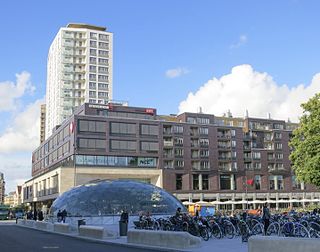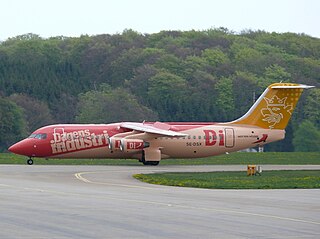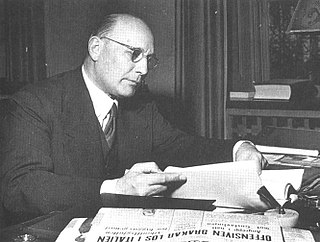
Svenska Dagbladet, abbreviated SvD, is a daily newspaper published in Stockholm, Sweden.

Dagens Nyheter, abbreviated DN, is a daily newspaper in Sweden. It is published in Stockholm and aspires to full national and international coverage, and is widely considered Sweden's newspaper of record.

Göteborgs-Posten, abbreviated GP, is a major Swedish-language daily newspaper published in Gothenburg, Sweden.

Sydsvenska Dagbladet Snällposten, generally known simply as Sydsvenskan, is a daily newspaper published in Scania in Sweden.

Aftonbladet is a Swedish daily tabloid newspaper published in Stockholm, Sweden. It is one of the largest daily newspapers in the Nordic countries.

Expressen is one of two nationwide evening newspapers in Sweden. Describing itself as independent liberal, Expressen was founded in 1944; its symbol is a wasp and its slogans are "it stings" or "Expressen to your rescue".

The Swedish Trade Union Confederation, commonly referred to as LO, is a national trade union centre, an umbrella organisation for fourteen Swedish trade unions that organise mainly "blue-collar" workers. The Confederation, which gathers around 1.5 million employees out of Sweden's 10 million people population, was founded in 1898 by blue-collar unions on the initiative of the 1897 Scandinavian Labour Congress and the Swedish Social Democratic Party, which almost exclusively was made up by trade unions. In 2019 union density of Swedish blue-collar workers was 60%, a decline by seventeen percentage points since 2006 when blue-collar union density was 77%. A strong contributing factor was the considerably raised fees to union unemployment funds in January 2007 made by the new centre-right government.

Dagens industri (Di) is a financial newspaper in tabloid format published in Stockholm, Sweden.

Helsingborgs Dagblad, published in Helsingborg in Skåne is the largest newspaper in Swedish outside the metropolitan districts of Malmö, Göteborg and Stockholm.

Metro was a free daily newspaper in Sweden. It was printed in four editions: Stockholm, Gothenburg, Skåne and National, which were distributed in 67 towns and cities throughout the country. The paper was the first European free paper. On 8 August 2019, its cancellation was announced.
Östgöta Correspondenten, commonly known as Corren, is a daily Swedish language newspaper in Linköping, Sweden.

Norrköpings Tidningar, also known as NT, is a Swedish language daily newspaper with its main distribution in northern and eastern Östergötland, Sweden.
Stockholms Dagblad was a conservative morning newspaper published in Stockholm between 1824 and 1931.
Norra Skåne is a local newspaper based in Hässleholm, Sweden. The paper has been in circulation since 1899.

Arbetet was a Swedish-language social democrat newspaper published in Malmö, Sweden, from 1887 to 2000.
Stockholms-Posten was a Swedish newspaper, published between 20 October 1778 and 1833. It belonged to the biggest papers in Swedish press during its publication, and is known for its influence upon contemporary Swedish culture.
Östra Småland, also known as Östran, was a local newspaper based in Kalmar, Sweden. The paper was in circulation between 1928 and 2019.

Torsten Kreuger was a Swedish engineer, industrialist, newspaper owner and banker.
Nya Dagligt Allehanda, also known as the NDA was a Swedish conservative-leaning newspaper published in Stockholm from 1859 to 1944.














